How battery-powered trucks help prevent skidding
Norway is known to be a model country for electric mobility. Nowhere else is the share of electric cars among new registrations so high, and the switch to electric drives is also in full swing for heavy commercial vehicles. The fact that there are occasional hiccups – such as with some electric buses in Oslo this winter – is a matter of course for Norwegians. What sometimes causes mockery abroad is seen as a learning effect in the Scandinavian country.
Using a special vehicle from Designwerk should be no different: Norway’s public road administration, Statens Vegvesen, uses an electric truck as a snow plough. Specifically, it is an electric truck from Designwerk based on the Volvo FH with a 1,000 kWh battery. The EV is not used to clear snow in a city or on flat coastal roads but on the E6 – right across the Dovrefjell mountains.
In quite hilly conditions at five degrees Celsius below zero, the electric snow plough lasted a full day of operation with almost nine hours on the road without any problems. In a mixture of light and heavy snowfall, the charge level was still at 28 per cent at the end of the day – the Designwerk truck started with 90 per cent. According to the Norwegians, this results in an average consumption of 182 kWh/100 km. And as 38 per cent of the battery was not used, there is even a buffer for even more adverse conditions or longer deployments.
Norwegian authority extends test deployment
After a one-week test phase, the verdict is favourable, so further tests on the E136 between Dombås and Bjorli and at Bjorli Airport will be carried out for a month – with the possibility of an extension. The Norwegian Public Roads Administration has previously carried out several pilot projects with electric ploughing. The first one took place in 2021 when an electric wheel loader was tested on footpaths and cycle paths in Trondheim. However, the battery capacity was too low. That should be different now with 1,000 kWh.
However, the Norwegian road administration is the only one testing electric trucks for winter maintenance – Germany is, too. There, Mercedes-Benz Trucks and the federal motorway authority Autobahn GmbH tested a prototype of the eActros 600 in “demanding winter service” at the beginning of February. With a battery capacity of around 600 kWh, the electric long-haul truck from Mercedes has to make do with slightly less energy than the Volvo FH converted by Designwerk. But it is also subjected to different operating conditions. And on the very terrain for which the eActros 600 was developed – the motorway.
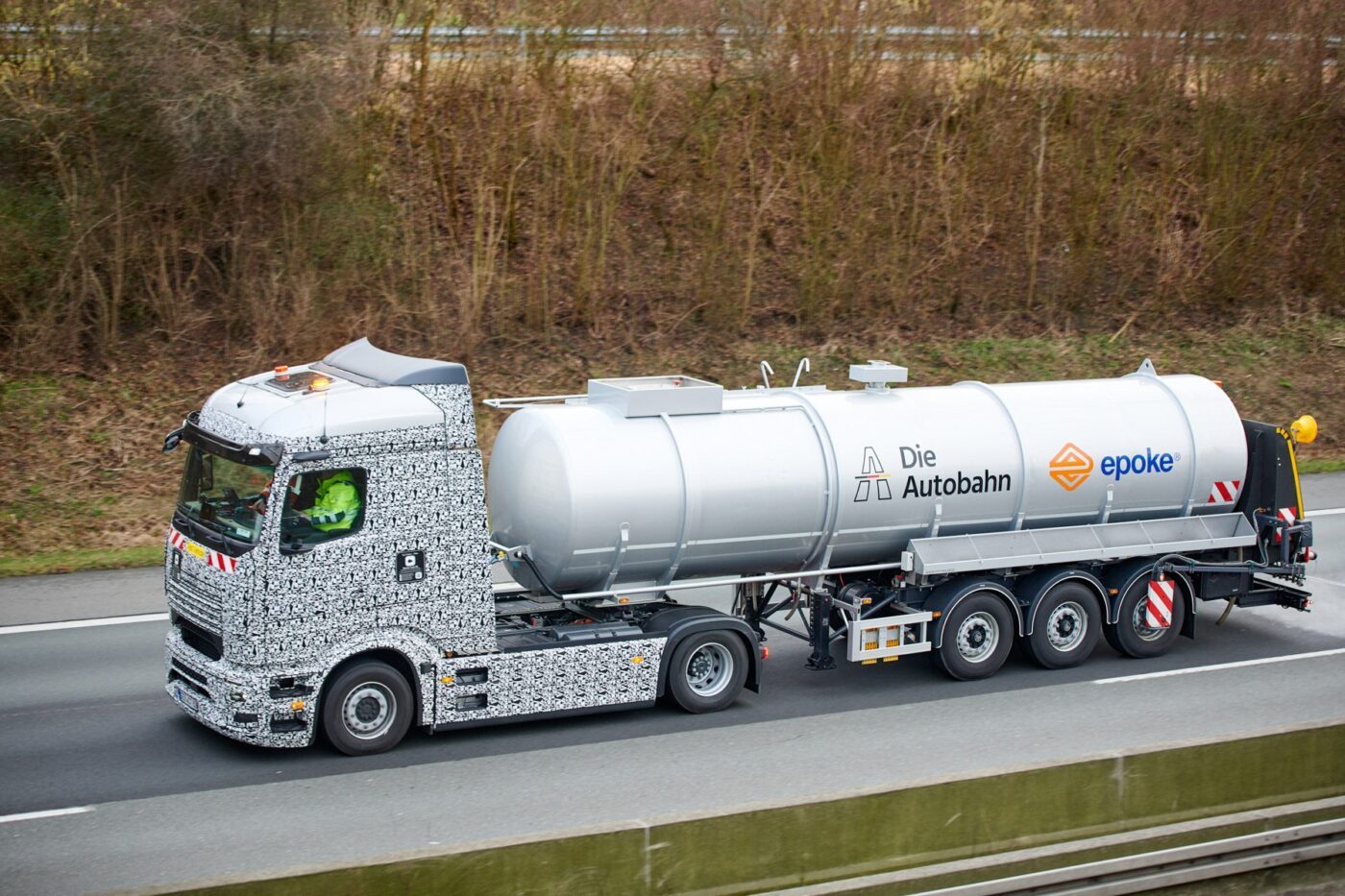
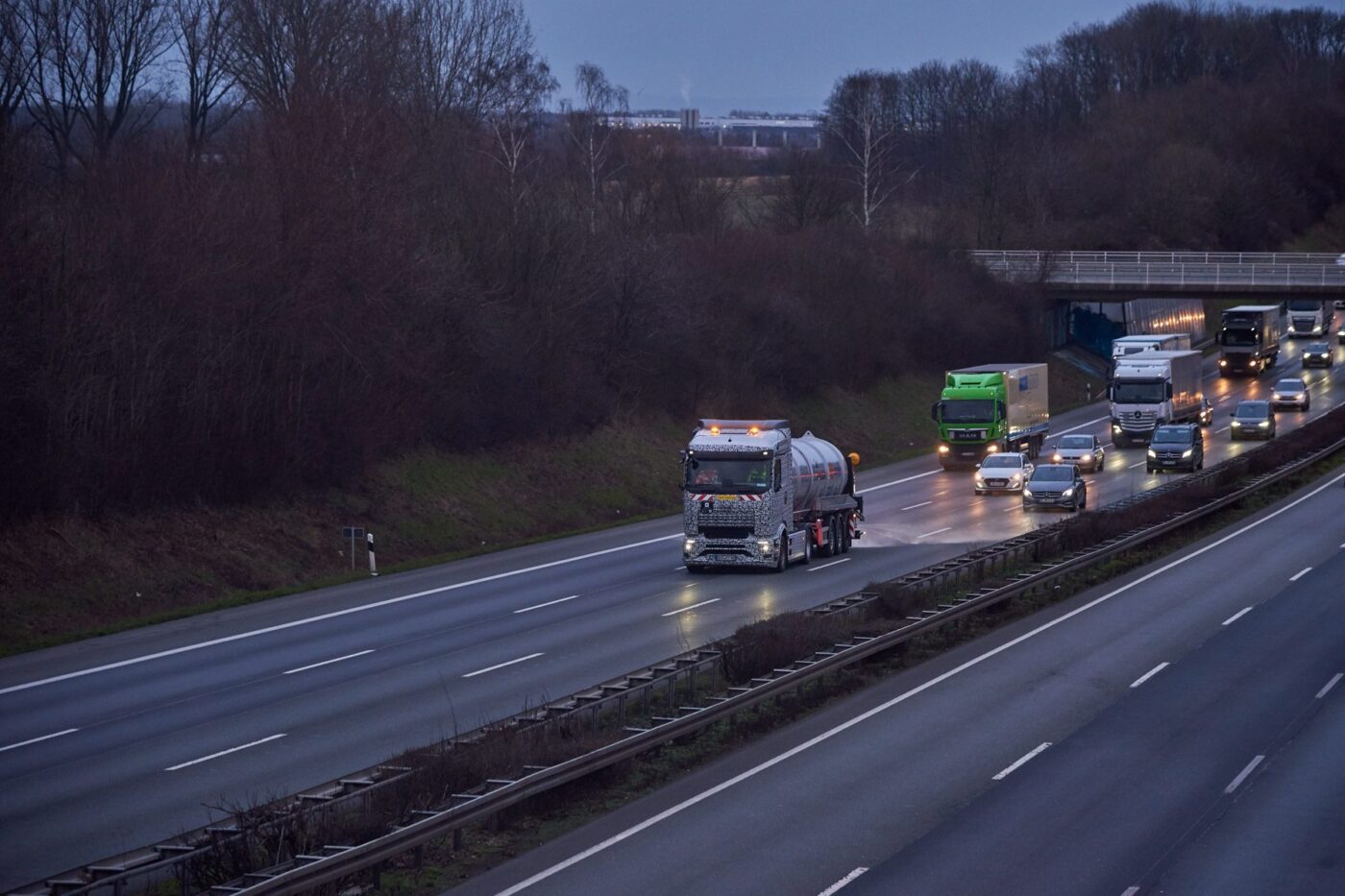
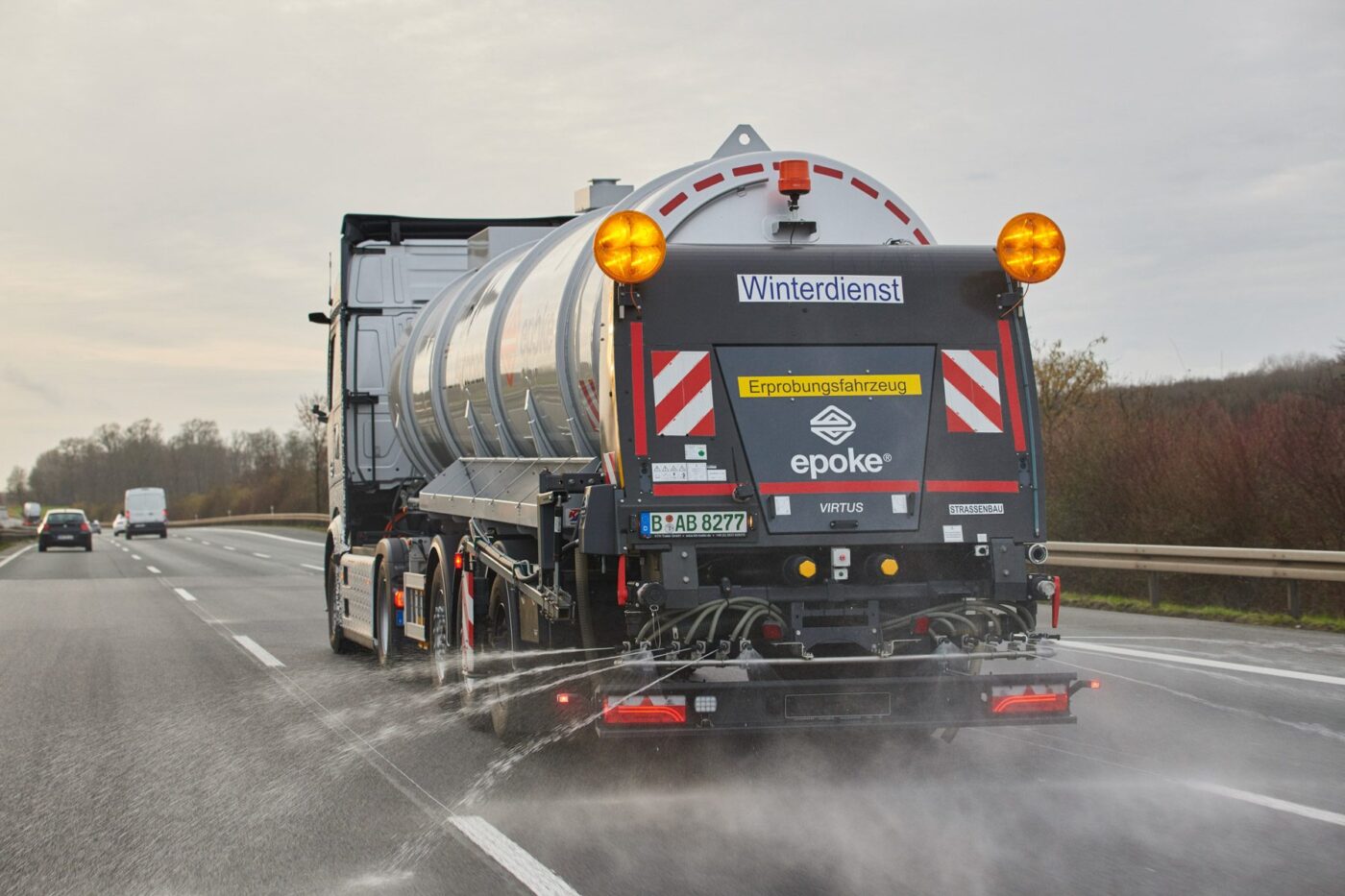
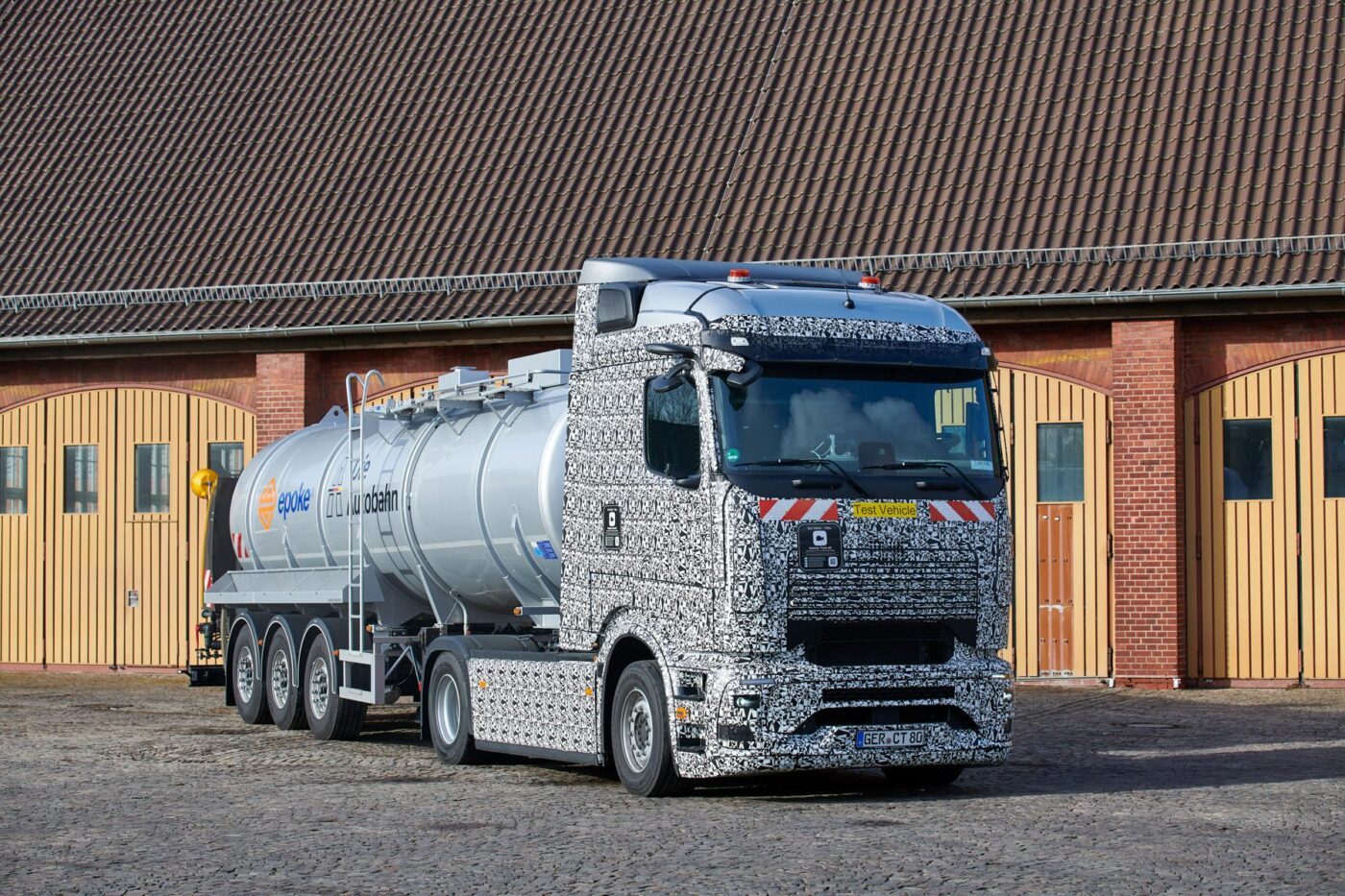
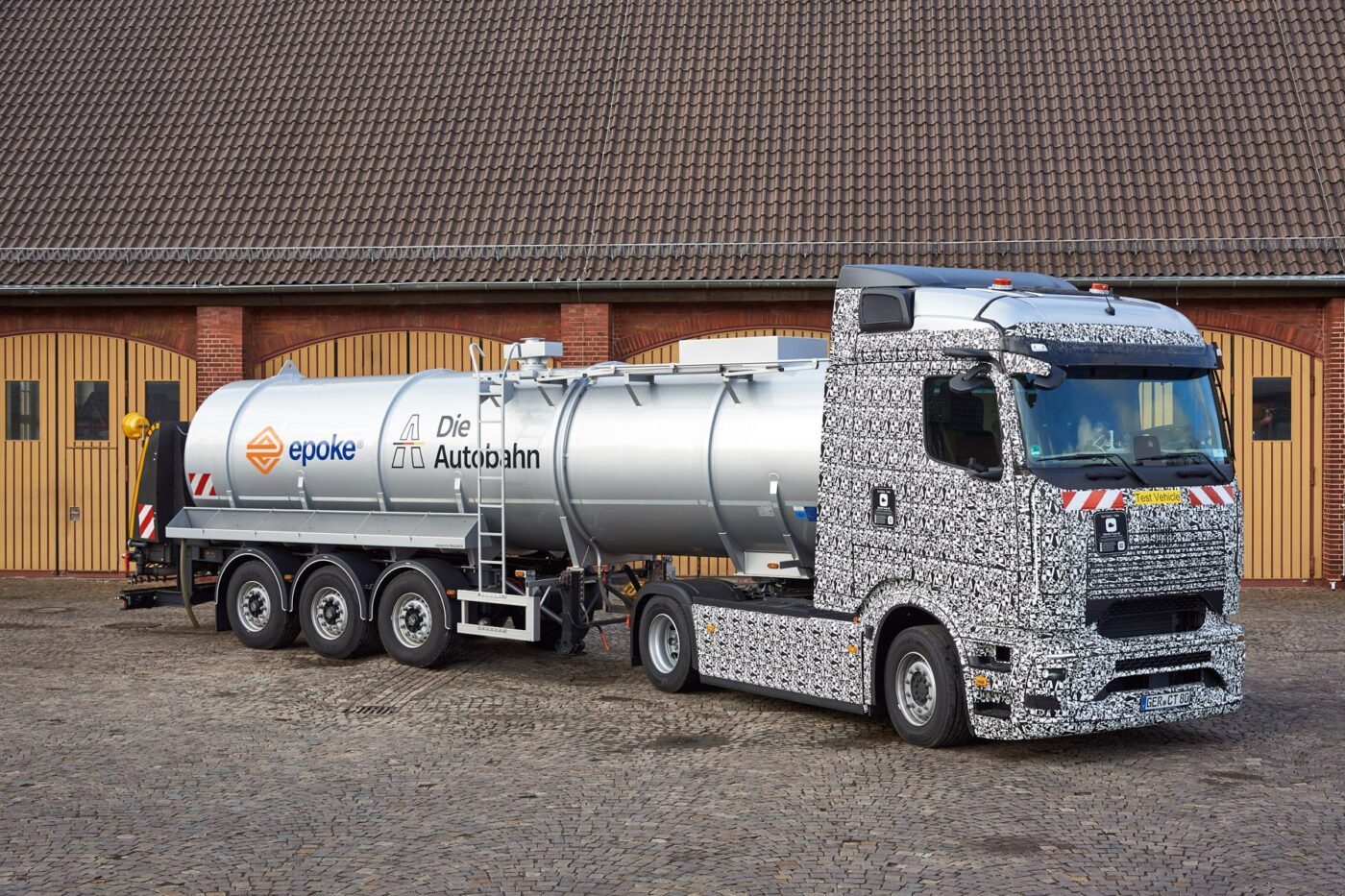
During the test on a section of the A2 motorway between Hamm and Bielefeld, a prototype – series production will launch at the end of 2024 – was on the road with a special semi-trailer from Epoke. Visually, it is a semi-trailer with a large tank, but it is actually more than just a tanker.
As a preventative measure against black ice, Autobahn GmbH uses a brine made from water and salt as a more environmentally friendly alternative to conventional road salt. The brine sprayer semi-trailer enables the brine to be spread at speeds of 80 kph in moving traffic up to a spreading width of 12 metres. The spreader is driven independently of the towing vehicle via the rear wheel of the semi-trailer. The trials have shown that preventive brine spreading operations in winter service can be mastered with electric trucks,” says Daimler Truck.
However, the press release does not mention how far the eActros 600 with the brine sprayer semi-trailer travelled in one day. The manufacturer gives the range as 500 kilometres – and not empty, but “after preconditioning with a 4×2 tractor unit with a gross train weight of 40 tonnes at an outside temperature of 20°C in long-distance transport operations.” In other words, in the temperature range in which it is usually deployed, it is unlikely to be 500 kilometres. However, when properly planned, it seems it can also be used with an electric tractor unit, as the test has shown.
ntb.no (Norway), daimlertruck.com (Germany)

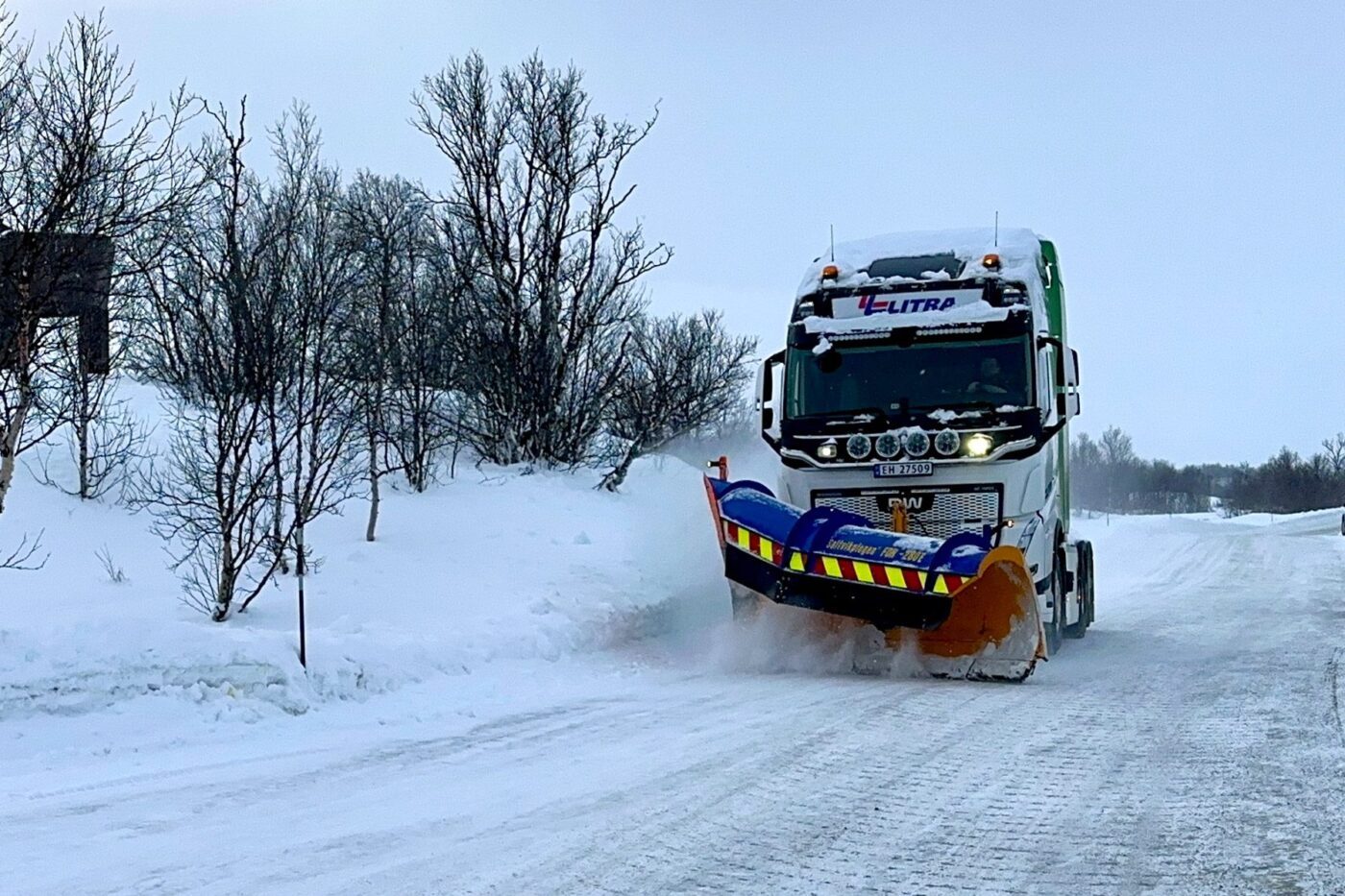
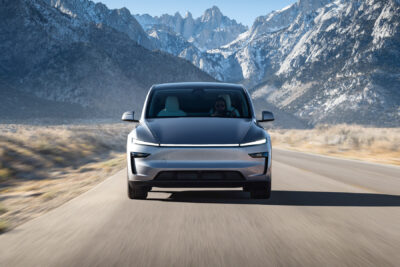


1 Comment